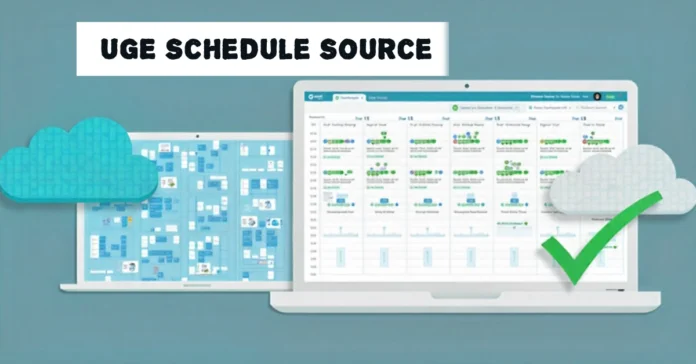Gastroshiza (gastroschisis) is a birth defect where a baby’s intestines develop outside the abdomen through a small opening near the belly button. It affects about 4 per 10,000 newborns and is typically detected during routine ultrasounds around 20 weeks of pregnancy. With immediate surgical treatment after birth, survival rates exceed 90% in well-equipped medical facilities.
The condition requires specialized neonatal care but has a generally positive outlook.
What Is Gastroshiza and Why Does It Happen?
When you’re expecting a baby, hearing any medical diagnosis can feel overwhelming. Gastroshiza is a congenital condition where an infant’s intestines—and sometimes other organs—protrude through an opening in the abdominal wall. This happens during fetal development when the abdominal wall doesn’t close completely.
The opening typically measures less than 4 centimeters and appears just to the right of the belly button. Unlike similar conditions, there’s no protective membrane covering the exposed organs. This means the intestines float freely in the amniotic fluid during pregnancy.
Doctors don’t fully understand why gastroshiza occurs. Research suggests it’s related to how the body wall forms during the fourth week of embryonic development. When the lateral body wall folds fail to meet and fuse properly, it creates this defect.
Current studies from 2025 indicate that environmental and maternal factors play a role. However, there’s no single cause that medical professionals can point to with certainty. What we do know is that it’s not something parents can prevent through actions during pregnancy.
Who’s Most at Risk for Gastroshiza?
Certain factors increase the likelihood of having a baby with this condition. Young maternal age is the strongest predictor—mothers under 20 face higher risks compared to older women. This pattern has puzzled researchers for years.
Lifestyle factors matter too. Women who smoke cigarettes or consume alcohol during pregnancy show higher rates of gastroesophageal reflux in their babies. These substances appear to interfere with normal fetal development during crucial early weeks.
Interestingly, recent data from the CDC shows approximately 1,871 babies are born with gastroshiza annually in the United States. The rates increased significantly between 1997 and 2008, climbing nearly threefold. However, prevalence has been declining since 2009, though scientists aren’t entirely sure why.
Genitourinary infections during pregnancy have also been linked to increased risk. Additionally, exposure to certain environmental pollutants, particularly polycyclic aromatic hydrocarbons, may play a role. Diet quality before conception matters—women with better nutrition show reduced risk, especially in Hispanic populations.
How Do Doctors Detect Gastroshiza?
Most cases are identified during routine prenatal care. The 20-week anatomy ultrasound typically reveals free-floating bowel loops in the amniotic cavity. This imaging technology has made early detection remarkably straightforward.
About 90% of cases in developed countries are diagnosed prenatally. Ultrasound technicians can clearly see intestinal loops outside the baby’s body. When detected, maternal serum alpha-fetoprotein (AFP) levels are often elevated—higher than what’s seen with similar conditions.
Some parents don’t discover the condition until birth. Approximately 60% of babies with gastroshiza arrive prematurely. At delivery, medical teams immediately recognize the visible protrusion of organs through the abdominal wall.
Early diagnosis brings significant advantages. It allows parents to deliver at specialized tertiary care centers equipped with neonatal intensive care units. Planning gives surgical teams time to prepare and reduces risks associated with transferring newborns between facilities.
Understanding Simple vs. Complex Cases
Not all cases of gastroshiza are the same. Medical professionals classify them as either simple or complex, which helps predict outcomes and plan treatment approaches.
Simple gastroshiza involves only the intestines protruding through the defect. The bowel appears relatively healthy, without significant damage or complications. These cases generally have better outcomes and shorter recovery times.
Complex gastroshiza includes additional complications. The intestines may show signs of damage, such as twisting, perforation, or reduced blood flow. In rare instances—about 6% of cases—the liver or stomach also herniates through the opening. When the liver is involved, survival rates drop significantly compared to cases without liver herniation.
The size and condition of the exposed bowel at birth serve as the most important factors for prognosis. Smaller defects can sometimes cause more problems because they restrict blood flow to the herniated organs. Prenatal ultrasounds showing bowel dilation over 20 millimeters typically indicate a more complicated course ahead.
Surgical Treatment and What to Expect
Surgery is the only treatment for gastroshiza. Most infants undergo their first operation within hours of birth. The goal is straightforward—return the organs to the abdominal cavity and close the opening.
Only about 10% of cases can be closed in a single surgery. For larger defects, doctors use a staged approach. They cover the exposed organs with sterile protective materials and gradually move them back inside over several days or weeks. This gives the small abdomen time to accommodate the organs without creating dangerous pressure.
After surgery, the real challenge begins. The intestines need time to start functioning normally. Babies receive nutrition through IV fluids while their digestive system recovers. This can take weeks or even months.
Parents should prepare for extended hospital stays. The duration depends on how quickly the baby’s bowel function returns and whether complications arise. Infections pose the biggest risk because the exposed organs are vulnerable before surgery.
Life After Gastroshiza Surgery
Recovery doesn’t end when you leave the hospital. Children who had gastroshiza face some long-term considerations, though most lead completely normal lives.
Feeding challenges are common initially. Some babies struggle with swallowing or digesting food properly. This often improves over time, but may require specialized feeding plans or occupational therapy support.
Intestinal malrotation affects all children after gastroshiza surgery. This means the intestines don’t sit in their typical position. About 1% will experience a midgut volvulus later—a serious twisting of the intestines that requires emergency treatment.
Growth patterns sometimes lag behind peers during early years. However, most children catch up by school age. Ongoing pediatric follow-up helps monitor development and address any concerns promptly.
The psychological impact on families shouldn’t be underestimated. Parents often experience anxiety during pregnancy and after birth. Connecting with support groups like The Global Gastroschisis Foundation (also known as Avery’s Angels) provides valuable emotional support and practical guidance from families who’ve been through similar experiences.
What Are the Survival Rates?
If left untreated, gastroshiza is fatal. But with proper medical care, the outlook is quite good. Current survival rates exceed 90% in facilities equipped to handle these complex cases.
Mortality risk increases with certain factors. Premature birth, multiple complications, and an Apgar score below 7 at five minutes all correlate with worse outcomes. When two or more complications occur together, the risk rises significantly.
The condition of the bowel at birth matters most. Healthy-appearing intestines predict smooth recovery. Damaged, thickened, or poorly perfused bowel suggests a longer, more complicated journey ahead.
Most deaths occur in the neonatal period rather than during surgery itself. Necrotizing enterocolitis—a dangerous intestinal condition—poses the biggest threat to infants with gastroshiza. Close monitoring helps catch problems early when they’re most treatable.
Preventing Gastroshiza: What Can You Do?
There’s no guaranteed way to prevent gastroshiza. However, certain steps improve overall pregnancy outcomes and potentially reduce risk.
1. Start prenatal care early
Regular check-ups allow doctors to monitor fetal development and detect any abnormalities quickly. The earlier gastroshiza is identified, the better prepared everyone can be.
2. Folic Acid Supplements
Take folic acid supplements before conception and during early pregnancy. While the link to gastroshiza specifically isn’t proven, folic acid reduces the risk of various birth defects. Aim for 400 micrograms daily.
3. Avoid harmful substances
Avoid harmful substances completely. Don’t smoke, drink alcohol, or use recreational drugs during pregnancy. These exposures are clearly linked to higher rates of abdominal wall defects.
4. Maintain good nutrition
A balanced diet with plenty of fruits, vegetables, whole grains, and lean proteins supports healthy fetal development. Women who eat better before pregnancy show a lower risk across multiple studies.
5. Address infections promptly
Genitourinary infections need immediate treatment. Regular prenatal visits help catch and treat these issues before they affect the baby.
Research and Awareness
Medical advances continue to improve outcomes for babies with gastroesophageal reflux. Surgical techniques are more refined. Neonatal care has become increasingly specialized. Understanding of feeding protocols has led to shorter hospital stays and better long-term health.
July 30 marks Gastroschisis Awareness Day annually. This observance, led by The Global Gastroschisis Foundation, has grown steadily since the early 2000s. The 2025 campaign celebrated its 16th anniversary with global participation.
Researchers are still investigating why rates increased so dramatically and then declined. A 2025 study from the National Birth Defects Prevention Study examined 16 different risk factors but couldn’t fully explain the trends. This ongoing research will hopefully provide better prevention strategies in the coming years.
For families facing a gastroshiza diagnosis, remember that you’re not alone. Thousands of families navigate this journey each year. Most children thrive after treatment. With the right medical team and support network, your baby can have an excellent quality of life.




